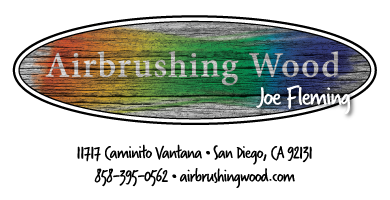One of the types of dyes I saw at Nick Agars' demo in Northbrook (around Chicago) last summer was the ChromaCraft dyes. I'm not experienced with dyes and feel as if Nick always give great advice. I now have an airbrush set with a small compressor, a small shelter for spraying, and am gettit together various accessories susc as quick release connections.
Is Nick Agar's dye (ChromaCraft) good quality? Are there oather dyes out therer (preferably premixed for now to get started) which are also good for coverage and color.
Any other accessories/items besides the brushes, compressor, dyes, and a shelter to keep the overspray in check?
Is Nick Agar's dye (ChromaCraft) good quality? Are there oather dyes out therer (preferably premixed for now to get started) which are also good for coverage and color.
Any other accessories/items besides the brushes, compressor, dyes, and a shelter to keep the overspray in check?


